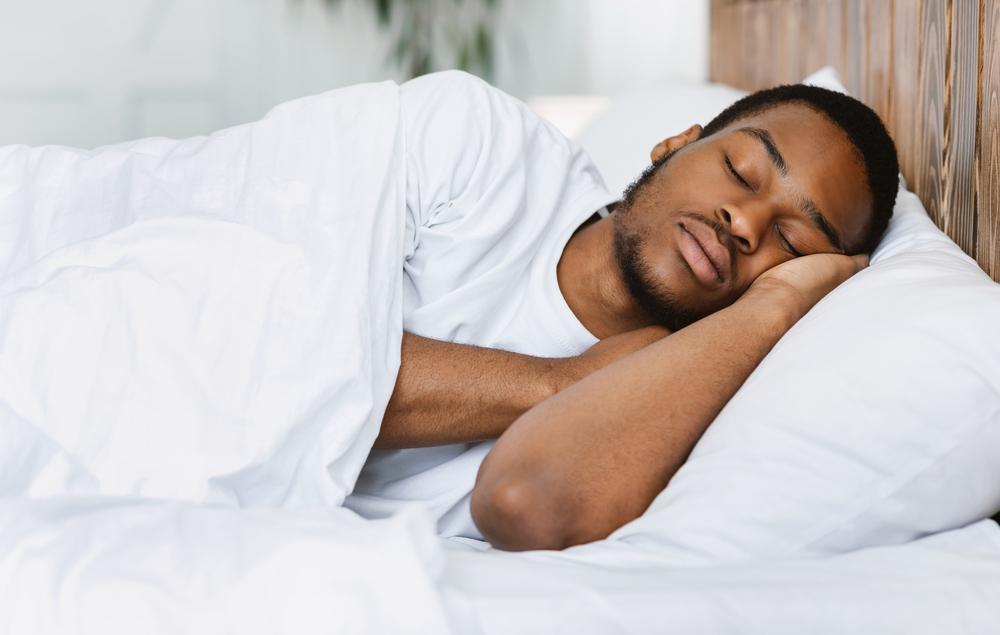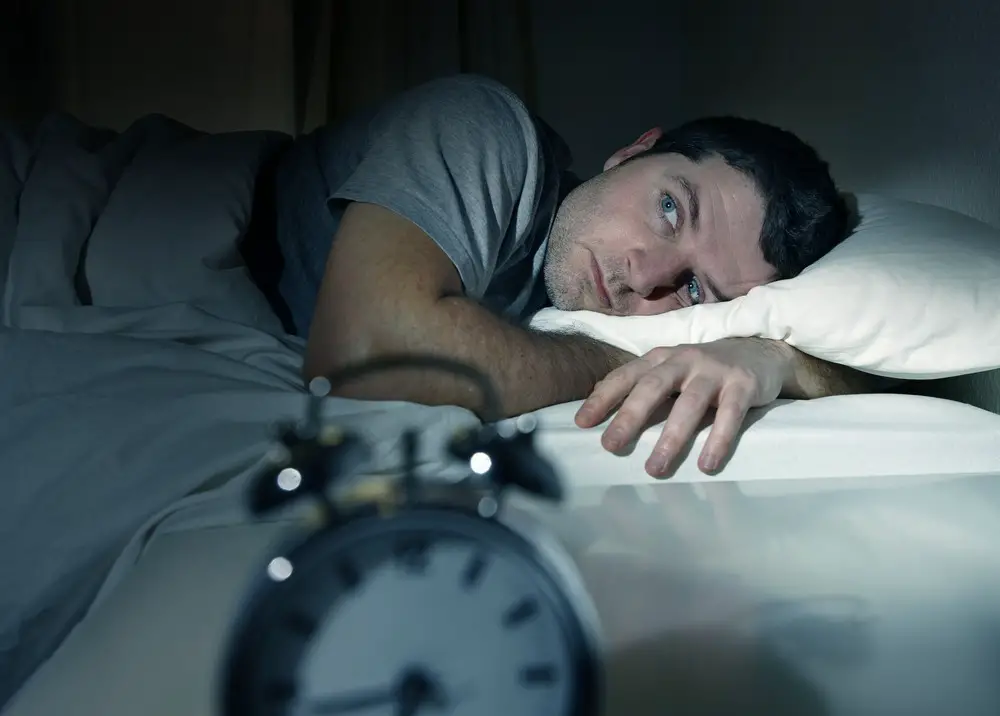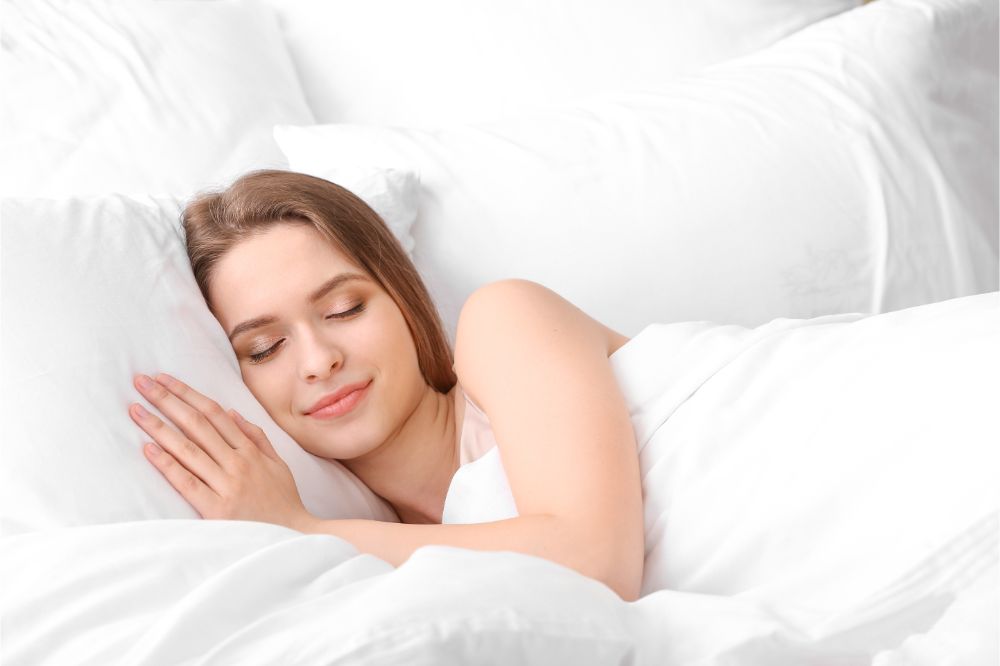As a BetterHelp affiliate, we receive compensation from BetterHelp if you purchase products or services through the links provided
Struggling to fall asleep quickly can feel like a nightly challenge for many. Tossing and turning, watching the clock tick closer to morning, is a common issue that disrupts our daily lives.
Did you know that small adjustments in your bedtime routine might be all it takes to drift off faster? This article is packed with simple, actionable tips aimed at helping you embrace sleep swiftly and improve your overall sleep quality.
From breathing techniques to optimizing your environment, these strategies are easy to integrate into your nightly routine. Ready for better nights ahead? Keep reading for secrets to fast slumber.
Sleep Hacks: 5-Minute Tricks for Faster Zzz’s
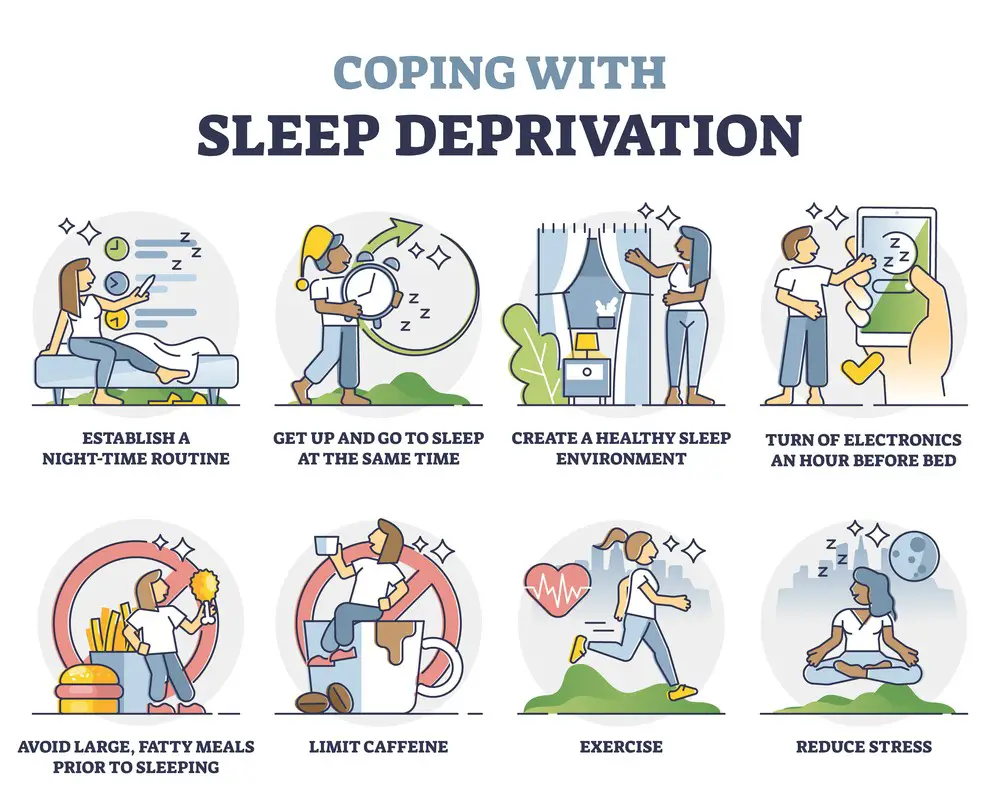
Falling asleep quickly can be challenging, especially in today’s fast-paced world, where our minds are constantly buzzing with thoughts and worries. However, some techniques can help you drift off to sleep in as little as 10, 60, or 120 seconds.
These strategies involve a combination of physical relaxation, mental focus, and breathing exercises to calm your body and mind, making it easier to transition into a restful slumber.
10 Second Military Method
The military method is worth trying if you’re looking to fall asleep in just 10 seconds. Developed by the U.S. Navy Pre-Flight School, this method involves relaxing your entire face, including the muscles in your forehead, eyes, cheeks, and jaw.
Lower your shoulders to the floor and then, one at a time, relax your upper and lower arms. Exhale, letting go of the breath first in your chest and then in your legs, making your way down from the thighs.
You should clear your mind for 10 seconds by imagining a relaxing scene. If this doesn’t work, repeatedly say “don’t think” for about 10 seconds.
Take a deep breath and imagine a warm, calming sensation flowing through your body as you exhale. By consciously relaxing your muscles and quieting your mind, you can potentially drift off within 10 seconds.
This method promotes relaxation and can help overcome insomnia or disrupted sleep patterns by easing tension in the body and calming the mind. By following these steps strictly every night, you will see an improvement in how quickly you can fall asleep amidst noise or stress.
1 Minute Technique
For those needing more time, the 4-7-8 breathing technique can help you fall asleep in 60 seconds.
This method involves inhaling through your nose for 4 seconds, holding your breath for 7 seconds, and exhaling through your mouth for 8 seconds. Repeat this cycle three or four times, focusing on the rhythm of your breathing.
The controlled breathing pattern helps reduce stress and anxiety, slowing your heart rate and promoting relaxation that can lead to sleep within a minute.
This process slows your heart rate and relaxes your mind, making it easier to drift into sleep.
Practicing this method can quickly become part of your bedtime routine, manifesting as an effective strategy against insomnia. It prepares your body for sleep and reduces stress, helping you create a peaceful state conducive to faster slumber without relying on medication or rigorous exercises.
If you are still awake after trying these techniques, the body scan meditation is an effective way to fall asleep in 120 seconds.
2-Minute Drifter
Start by bringing your attention to your toes and consciously relax each part of your body, progressively moving up towards your head. As you focus on releasing tension in each muscle group, visualize your body becoming heavier and sinking into the mattress. Combine this with deep, steady breathing, and you’ll likely be drifting off within two minutes.
While these techniques can help induce sleep quickly, it’s important to note that they may only work for some time. Stress levels, sleep environment, and individual differences can impact their effectiveness. However, incorporating these strategies into your bedtime routine can improve overall sleep quality and help you fall asleep faster most nights.
Remember, consistency and practice are key, so be patient and persistent to achieve a good night’s rest.
Instant Sleep: Mastering the Art of Quick Zzz’s
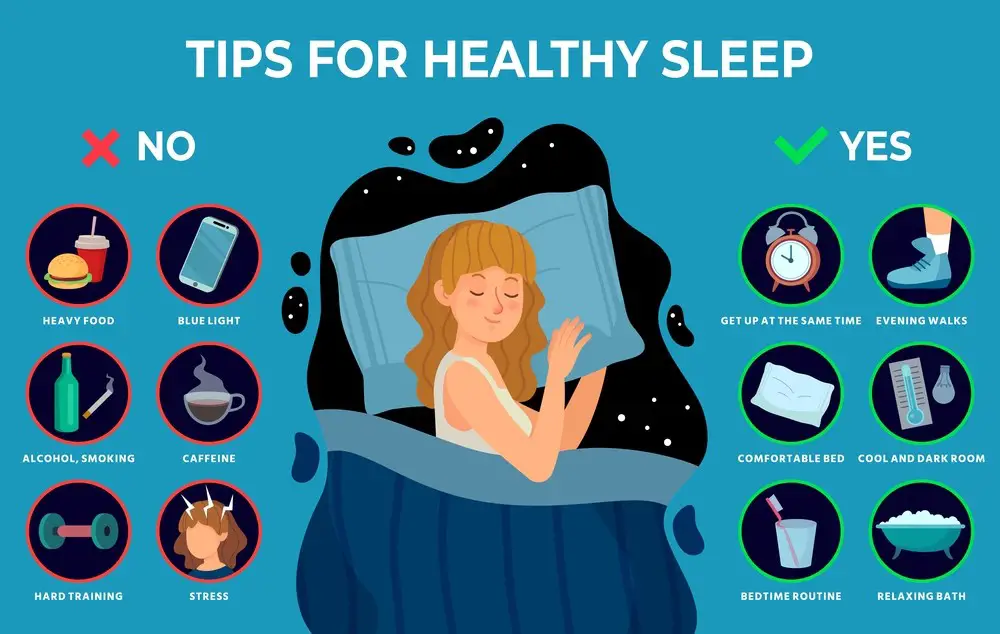
Discover the power of instant sleep techniques to master quick Zzzs and transform your nights into a realm of restful slumber. Explore further for effective strategies that promise fast results.
Progressive Muscle Relaxation
Tensing and gently relaxing each muscle group in your body, starting from your toes and working your way up to your head, is known as progressive muscle relaxation. This technique can help you fall asleep more quickly by easing bodily stress and fostering a calmer atmosphere.
By focusing on each area, you become more aware of what relaxation feels like and distract your mind from the day’s stresses, paving the way for quicker sleep.
Regular practice of Progressive Muscle Relaxation before bedtime can help create a peaceful transition into sleep. It improves sleep hygiene by establishing a calming pre-sleep routine that signals your body it’s time to rest.
Incorporating this technique into your nightly rituals might be the game-changer you need to enhance both the speed at which you fall asleep and the quality of sleep you achieve.
Guided Imagery
Guided Imagery encourages you to use your imagination to relax and fall asleep quickly. Imagine a peaceful scene, perhaps a quiet beach at sunset or a serene mountain landscape. This method helps shift your focus away from the stressors that keep you awake.
By visualizing calming images, your body feels the relaxation needed for sleep. Your breathing slows down, muscles loosen up, and before you know it, sleep comes knocking.
This relaxation technique is especially beneficial if your mind races with thoughts as bedtime approaches. Incorporating guided Imagery into your bedtime routine can vastly improve sleep patterns and lead to quicker shut-eye times.
It’s all about finding an image that soothes you and letting it take over those pesky thoughts that delay sleep.
Fall Asleep Faster: Tips to Snooze in Seconds
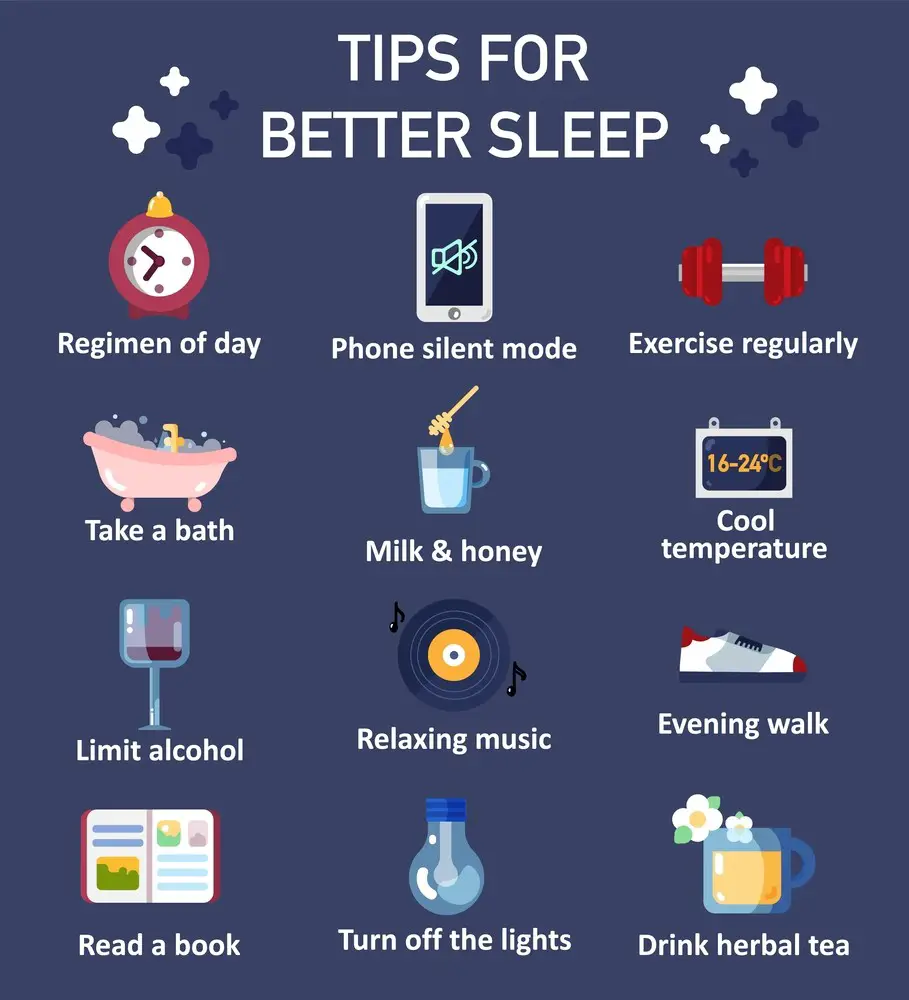
Getting a good night’s sleep is essential for your health and well-being. Here are some additional tips to help you fall asleep quickly, address insomnia, and improve your sleep quality.
Keep Your Bedroom Cool
A cooler room can enhance your sleep quality by signaling your body it’s time to sleep. Additionally, ensure your bedroom is well-ventilated. A fresh air supply can improve sleep quality by reducing CO2 levels and keeping the room’s environment comfortable.
Limit Screen Time Before Bed
Blue light from screens interferes with melatonin production, making it harder to fall asleep. Furthermore, consider using blue light filters or apps that adjust screen warmth in the evening to minimize blue light exposure, aiding your body in sleep preparation.
Stick to a Consistent Sleep Schedule
Going to bed and waking up at the same time daily helps regulate your body’s internal clock. This consistency reinforces your sleep-wake cycle, promoting easier sleep initiation and morning awakenings, even on weekends or days off.
Consider Mindfulness or Meditation
These practices reduce stress and prepare your mind for a peaceful rest. Engaging in deep-breathing exercises or progressive muscle relaxation can also diminish bedtime anxiety, facilitating a state of calm that’s conducive to falling asleep.
Incorporate Stretching Into Your Bedtime Routine
Gentle stretches can relieve muscle tension and promote relaxation, aiding in quicker sleep onset. Incorporating yoga poses designed for sleep can enhance this effect, further relaxing the body and mind for a restful night.
Avoid Heavy Meals Close to Bedtime
Eating big or spicy meals can cause discomfort and disrupt sleep patterns. Opting for a light snack that contains tryptophan, such as a small serving of turkey or a banana, may help in inducing sleepiness by increasing serotonin levels.
Create a Pre-sleep Ritual
Engaging in soothing activities tells your brain it’s time to wind down. Reading a book or listening to a podcast can also be part of this ritual, as long as they’re not overly stimulating or involve looking at a screen.
Use Comfortable Bedding
Ensure your mattress, pillows, and covers support good sleep posture and comfort. Periodically replacing or rotating your mattress can prevent uneven wear and maintain its supportive qualities, contributing to better sleep health.
Listen to White Noise or Calm Music
Soft background sounds can mask disruptive noise pollution and soothe you into sleeping faster. Experimenting with different types of sound, such as nature soundscapes or ambient music, can help you find the most effective audio backdrop for your sleep.
Cut Back on Caffeine Late in the Day
Caffeine can stay in your system for hours, delaying your body’s natural relaxation responses. Consider also reducing your intake of other stimulants like nicotine and certain medications in the evening, as these can similarly interfere with your ability to fall asleep.
Visualizing Happy Thoughts
Visualizing happy thoughts is a powerful tool for falling asleep swiftly. Fill your mind with images of places or moments that bring you joy, like a serene beach or fond memories with loved ones.
This technique helps shift your focus away from the stresses and worries that can keep you awake. Creating a mental space filled with happiness and peace encourages relaxation throughout your body, making it easier to drift into sleep.
Practicing this method regularly can improve how fast you fall asleep and the quality of your rest. Think of it as preparing your brain for sleep by gently guiding it towards positive thoughts and away from the noise of daily life.
This simple yet effective strategy supports better sleep habits, contributing to overall mental health benefits like reduced stress and enhanced mood.
Trying Sleep-enhancing Supplements
Trying sleep-enhancing supplements might be a helpful strategy if you struggle to rest at night. These natural sleep aids come in various forms, such as melatonin, valerian root, and magnesium.
Melatonin supplements can regulate your sleep cycle, making it easier for your body to understand when it’s time to wind down. Valerian root is known for reducing the time it takes to fall asleep and promoting deep sleep.
Conversely, magnesium helps calm the nervous system and prepare your body for restful slumber.
Before incorporating any supplement into your bedtime routine, consult a healthcare professional to ensure they align with your health needs and won’t interact negatively with medications you may be taking.
Experimenting with these supplements could help you achieve those quick zzz’s you’re after. Transitioning smoothly from this topic, let’s explore how a consistent sleep schedule can significantly improve your nighttime routine.
Sleep Fast and Sound: Techniques to Try Tonight
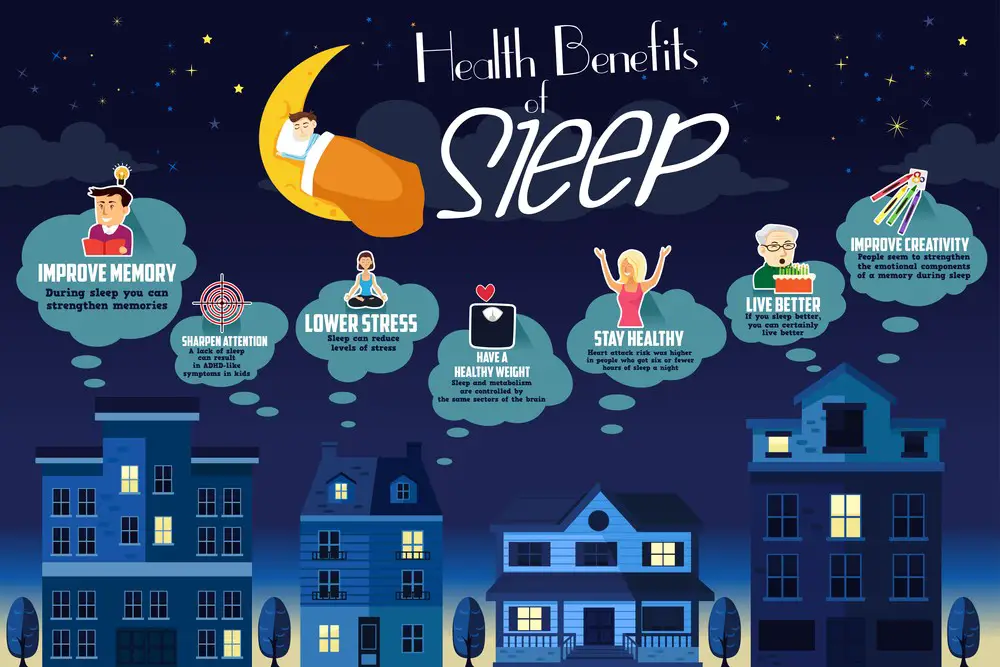
In your quest for restful slumber, tonight could be the night you break the cycle of sleepless nights. Implementing the right techniques just before bed can dramatically decrease the time you fall asleep. Here’s how to transition from wakefulness to dreamland with ease:
1. Prepare Your Sleep Environment: Make sure your sleeping space is primed for relaxation. This means keeping the room dark, quiet, and at a comfortable temperature. Use blackout curtains to eliminate light, and consider earplugs or a white noise machine to block out disruptive sounds.
2. Engage in a Relaxation Routine: Develop a pre-sleep ritual that helps signal to your body it’s time to wind down. This could include reading a physical book, meditating, or practicing deep breathing exercises. The key is consistency and engaging in activities that promote calmness.
3. Limit Bed Activities: Reserve your bed only for sleep and intimacy. Avoid working, eating, or watching TV in bed to strengthen the association between your bed and sleep.
4. Visualize Sleepiness: Close your eyes and imagine a calming and sleep-inducing scenario. Visualizing a serene environment can help your mind drift away from the day’s stresses.
Effortless Sleep: How to Drift Off in Minutes
Achieving effortless sleep may seem like a distant dream, but it’s within reach with the right mindset and practices. Here are some additional strategies to help you fall asleep in minutes:
- Optimize Your Sleep Schedule: Going to sleep and getting off at the same time every day, even on weekends, can significantly improve your sleep quality and help you fall asleep faster.
- Use Aromatherapy: Scents like lavender and chamomile have been shown to induce relaxation and sleepiness. Consider adding a few drops of essential oil to your pillow or using a diffuser in your bedroom.
- Limit Fluid Intake Before Bed: Reducing fluid intake before bedtime can minimize nighttime awakenings to use the bathroom, helping you maintain deeper sleep cycles.
- Cool Down: A drop in body temperature signals to your brain that it’s time to sleep. A warm bath or shower before bed can help facilitate this cooling down process, making it easier to fall asleep.
Sleep On-Demand: Unlocking the Secrets to Instant Rest
Achieving sleep on demand may sound like a fantasy, but it’s possible with the right approach. The secret lies in training your mind and body to swiftly enter a state of relaxation. Here’s how to unlock the door to instant rest:
Power Down Physically and Mentally: Begin by dimming the lights and engaging in a low-impact activity that signals your body to slow down. This could be anything from knitting to gentle stretching.
Cultivate a Sleep-Positive Mindset: Challenge negative beliefs about sleep by replacing them with positive affirmations. Remind yourself that you can and will fall asleep easily.
Cool Sheets, Warm Feet: Keep your sleeping environment cool, but consider wearing socks. Warm feet can dilate blood vessels, signaling to your brain that it’s time to sleep.
Sleep Better, Sleep Quicker: Tried and Tested Methods
For those seeking not just to fall asleep but to improve sleep quality, here are some tried and tested methods:
Restrict Bed Use: Use your bed only for sleep and intimacy. This strengthens the mental association between your bed and sleep.
Daylight Exposure: Regular exposure to natural light during the day helps regulate your sleep-wake cycle, improving sleep quality and the ease of falling asleep.
Gradual Relaxation: Starting from your toes and moving upwards, tense each muscle group before relaxing them. This full-body relaxation technique can lead to more profound relaxation and faster sleep onset.
Incorporating these strategies into your nightly routine can significantly improve your ability to fall asleep quickly and enjoy a more restorative night’s rest. With consistency and patience, sleep can become both effortless and rejuvenating.
Mastering the Art of Quick Slumber: The Ultimate Guide
Mastering the art of quick slumber requires a mix of relaxation techniques and sleep hygiene improvements. Small adjustments, like cooling your bedroom and engaging in the 4-7-8 breathing method before bed, can significantly enhance how quickly you fall asleep.
Peaceful music also creates a serene environment conducive to restful sleep. Strategies such as visualizing calming scenes or adopting a consistent bedtime routine further streamline the journey into sleep, making hitting the pillow an instant gateway to dreamland.
Good sleep doesn’t just hinge on what you do right before bedtime; it’s also about creating a rhythm your body recognizes and responds to positively throughout the day.
- How Having Cybersecurity Protection Helps You Relax - April 25, 2025
- 8 Reasons Why Spending Time Outside Calms You Down - April 25, 2025
- 5 Helpful Ideas for Managing Stress During a Plumbing Emergency - April 24, 2025
This site contains affiliate links to products. We will receive a commission for purchases made through these links.

